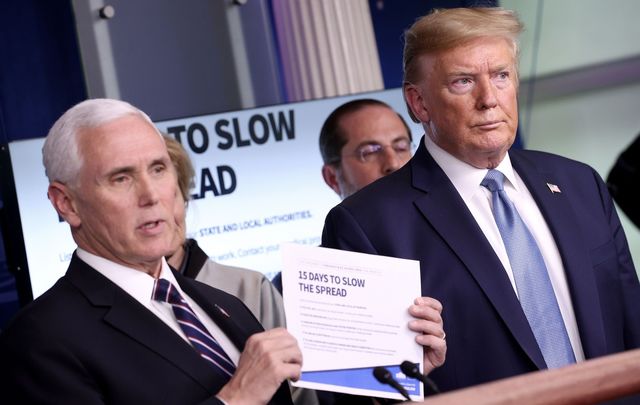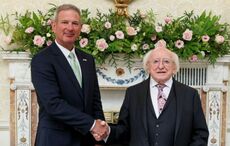The Department of Homeland Security in the United States has issued a notice of arrival restrictions for those arriving from China, Iran and certain countries in Europe, including Ireland, amid the coronavirus pandemic
In response to the COVID-19 outbreak the United States, American citizens, legal permanent residents, and their immediate families who are arriving from coronavirus-impacted areas must travel through one of 13 airports where DHS has established enhanced entry screening capabilities.
The new measures also call on all American citizens returning from the impacted area must self-quarantine for 14 days after their arrival.
As of March 17, there are 4,661 confirmed coronavirus cases in the US and 85 deaths.
Read more: 15,000 cases of coronavirus in Ireland by end of month, warns government
In accordance with Proclamations 9984, 9992, 9993, and 9994, entry to the US has been suspended for nearly all foreign nationals who have been in China, Iran, and certain European countries at any point during the 14 days prior to their scheduled travel to the U.S.

(DHS.gov)
Initially, Ireland and the UK were not included in this ban, but it was announced by Vice President Mike Pence on March 14 that entry from those countries would also be restricted effective March 16 at midnight.
The European countries subject to restrictions include Austria, Belgium, Czech Republic, Denmark, Estonia, Finland, France, Germany, Greece, Hungary, Iceland, Ireland, Italy, Latvia, Liechtenstein, Lithuania, Luxembourg, Malta, Netherlands, Norway, Poland, Portugal, Slovakia, Slovenia, Spain, Sweden, Switzerland, and the United Kingdom.
— Donald J. Trump (@realDonaldTrump) March 15, 2020
Implementation of COVID-19 restrictions
Americans returning from the affected countries will now be required to travel through 13 airports:
- Boston-Logan International Airport (BOS), Massachusetts
- Chicago O’Hare International Airport (ORD), Illinois
- Dallas/Fort Worth International Airport (DFW), Texas
- Detroit Metropolitan Airport (DTW), Michigan
- Daniel K. Inouye International Airport (HNL), Hawaii
- Hartsfield-Jackson Atlanta International Airport (ATL), Georgia
- John F. Kennedy International Airport (JFK), New York
- Los Angeles International Airport, (LAX), California
- Miami International Airport (MIA), Florida
- Newark Liberty International Airport (EWR), New Jersey
- San Francisco International Airport (SFO), California
- Seattle-Tacoma International Airport (SEA), Washington
- Washington-Dulles International Airport (IAD), Virginia.
LIVE: Press Briefing with Coronavirus Task Force https://t.co/K6VD9IPfOd
— The White House (@WhiteHouse) March 16, 2020
Read more: Trump has failed the coronavirus test, it's too late for a re-sit
Screening and quarantine
Upon arrival, travelers will proceed to standard customs processing. They will then continue to an enhanced entry screening where the passenger will be asked about their medical history, current condition, and asked for contact information for local health authorities. Additionally, some passengers will have their temperature taken.
After the enhanced entry screening is complete, passengers will be given written guidance about COVID-19 and be allowed to proceed to their final destination.
Once home, individuals must immediately self-quarantine in their homes and monitor their health in accordance with the Center for Disease Control's best practices.
In order to ensure compliance, local and State public health officials will contact individuals in the days and weeks following their arrival.
Read more: Britain and Ireland's differing approaches to Covid-19




Comments